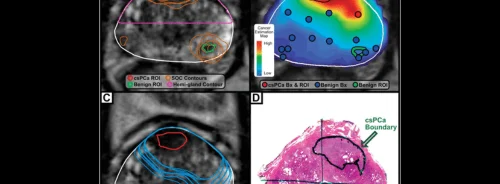HealthManagement, Volume 6 - Issue 4, 2006
Interview with Prof. Johannes Lammer
Prof. Johannes
Lammer
Chairman, Department of
Angiography and
Interventional Radiology,
University of Vienna/AKH
President of Cirse
How did You Come to be Involved in Interventional Radiology?
I am currently a Professor of Radiology and the Director of the Department for Interventional Radiology, at the Medical University of Vienna. I have always had a strong interest in interventional radiology, which is why I chose this specialty at a very early stage in my career. Due to this interest, I became very strongly involved in the activities of the Cardiovascular and Interventional Radiological Society of Europe (CIRSE), which is the ideal platform for European interventionists. Thanks to the support of my colleagues, I was made Treasurer of the society in 2001. Two years later I became its Vice-president, and following a further two years, its President.
How is CIRSE Leading Interventional Therapy Across Europe?
Since CIRSE was founded in 1985, it has become the largest subspecialty society in radiology, organising the largest non-cardiac endovascular meeting in Europe every year. We have an excellent Programme Planning Committee, headed by Prof. Michael Lee from Dublin, Ireland, ensuring we cover the latest topics in the field, as well as new therapies, such as interventional oncology, carotid stenting, etc. Even though our annual congress is definitely the highlight of our scientific year, we carry out many more activities in the field of training and further education throughout the year. One of our most important projects is the so-called European School of Interventional Radiology (ESIR), which consists of courses on interventional procedures held in different European countries.
Is CIRSE Active in the Education of Young Interventionists?
An important part of our educational activities are the CIRSE Foundation education and research grants. Our education grants are given to young interventionists who want to learn a new procedure and can only do so by completing part of their training at a different European hospital. With our education grants we try to encourage research in Cardiovascular and Interventional Radiology, enhancing scientific knowledge and developing new interventional diagnostic and therapeutic techniques. Furthermore our society is drawing up standards of practice documents and creating many opportunities for e-learning, such as E_IR (an online tool making educational material from the CIRSE Meetings available at all times) and a platform in EPOS. As you can see, our activities are very multi-faceted, the main focus being education and research.
What are the Main Issues Concerning the Development of Interventional Radiology in Europe?
The main benefit of interventional procedures is of course that they are less invasive, which results in lower morbidity and shorter hospital stays, which means lower costs. The main obstacles for the growth of interventional radiology is not a lack of funding, however, but rather the fact that most people are not aware of these benefits. This is a big problem, since interventionists often depend on other physicians to refer their patients to them. Only a well-informed patient will ask for referral rather than leaving this decision exclusively to the referring physician or consult an interventionist directly. Interventional cardiology seem to be a more developed science than interventional radiology because it focuses on one organ only, which is why it is easier for the public to understand. Furthermore there are simply more cardiologic patients
What Changes are Essential for the Future of Interventional Radiology?
At present, there are general outlines of the European Society of Radiology (ESR) for interventional radiology across Europe, which work very well, rather than having individual practice guidelines for every country. Also, every department of interventional radiology should have an outpatient clinic for the clinical examination of patients and an in-patient clinic, i.e. a dedicated ward for the procedures to be carried out. In the future, interventional radiology will replace many open surgical procedures, such as vascular and oncologic surgery. Fortunately, there is no lack of residents who are interested in becoming interventional radiologists. The specialty is very attractive and it is easy for trained interventionists to find a good job, since there is a strong need for them.





